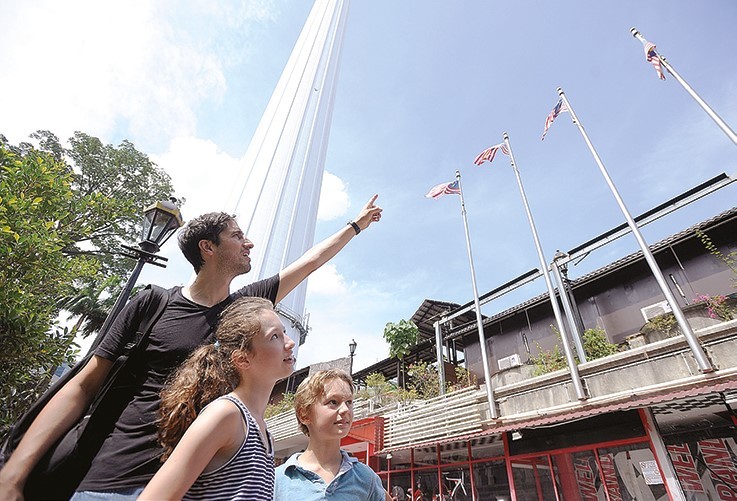
TOURISM operators are now racing to get ready in time to welcome travellers locally and abroad, after the nation’s borders were shut for two years.
The Malaysian Association of Tour and Travel Agents (Matta) VP (inbound and domestic) Ganneesh Rama said after two years hiatus, April 1 will mark a significant day for the tourism industry as it allows the industry to recover.
“Post-Covid-19 travel will expect more travellers’ bookings through tour operators and travel agencies due to different standard operating procedures (SOPs) in various destinations and special assistance for tested positive (Covid-19) tourists,” Ganneesh told The Malaysian Reserve (TMR).
However, he said the strong emphasis on safety will provide a challenging travel experience for the do-it-yourself travellers who travel on their own.
Thus, he estimated that the sales volume for inbound could reach only 10% until the end of 2022, based on the pre-Covid-19 levels.
“This (estimation) is in line with the Ministry of Tourism, Arts and Culture forecast of two million visitors until the end of this year,” he noted.
Nevertheless, he said Matta focuses on providing international tourists with less stressful travel experiences if they are tested positive for Covid-19 in their origin country.
“We have been sending the latest SOPs and entry requirements to our overseas clients, recalling our staff to work in stages and complying with health authority requirements,” he said.
Notably, the tourism businesses are prioritising the “Covid-19 product knowledge” to assist tourists post-Covid-19.
“We have walked an extra mile by getting ourselves certified by an internationally recognised health and safety programme through the Travel Safe Alliance Malaysia.”
Meanwhile, Malaysia Inbound Tourism Association (Mita) president Uzaidi Udanis said tourism operators will apply a similar approach to the Malaysia-Singapore vaccinated travel lane (VTL) and Langkawi travel bubble to welcome the international tourists on April 1.
“In terms of preparation, I don’t think we can achieve 100% — but what we can do is we have to push from the preparation that was done through the Malaysia-Singapore VTL and Langkawi travel bubble,” Uzaidi told TMR.
He is optimistic that the tourism operators will continue to improve gradually once the international border reopens.
“Mita has worked together with Malaysia tourism, where we brought in several travel agent players from Singapore and Indonesia to expose them to the products and destinations in Malaysia.
“We have started this since two weeks ago, and I can see a lot of inquiries from the countries,” he said.
Uzaidi said Mita will also conduct an engagement session with local tourism players to refresh and expose them to Malaysia’s new products.
On transportation, he said Mita has discussed with the Transports Ministry to ease the licence and road tax renewal for tourism buses.
“We need to renew road tax as well as insurance which will cost us some money. On average, one bus needs about RM10,000 to operate. Currently, there are shortages in transportation due to this renewal process,” he added.
In terms of hiring, he views that tourism operators as well as the hospitality industry may be labour-intensive, especially for housekeeping.
“I think they need a lot of manpower, and I feel that this is time for them to attract locals to join the industry, especially our fresh graduates from the industry,” he further said.
For the Malaysian Association of Hotels, its CEO Yap Lip Seng said the industry is still short of resources but the border reopening and the relaxation of the SOPs are expected to be a confidence boost to the people.
“This is the assurance that the industry is on track to recovery and business will resume as usual. This should encourage people to return to the industry or take up a hospitality career again,” Yap told TMR.
As for now, he said hotels are coping with what is available on hand and focus on productivity and efficiency, while managing expectations of guests based on their respective capacity.
“Average occupancy had been stagnant mostly since early January at approximately 30%-35%, peaking over holidays such as the Chinese New Year at approximately 40% for the domestic demand,” he said.
Meanwhile, he expects Malaysia will likely see minimal increase of international tourists for the first month of the border reopening as travellers are still unsure of requirements from both sides.
However, once the border reopening stabilises, he anticipates an average occupancy in the hospitality sector to inch up a little to about 50%.
“Having said that, we need to intensify our tourism marketing and promotions to put Malaysia back on the world tourism map.
“We are already losing out to neighbouring countries that had been aggressively marketing their reopening initiatives, Malaysia needs to do more to attract travellers not only for leisure but also business travels,” he added.
On the other hand, AirAsia (M) Bhd’s CEO Riad Asmat said the airline has prepared to recall its furlough staff in tandem with the border reopening.
“At the moment, we have already started recalling our furloughed employees. On the ground side, we are doing the necessary in getting the manpower management back,” Riad told a press conference during the AirAsia briefing on the border reopening recently.
Source: https://themalaysianreserve.com/2022/03/30/tourism-hoteliers-race-to-welcome-travellers-on-april-1/

